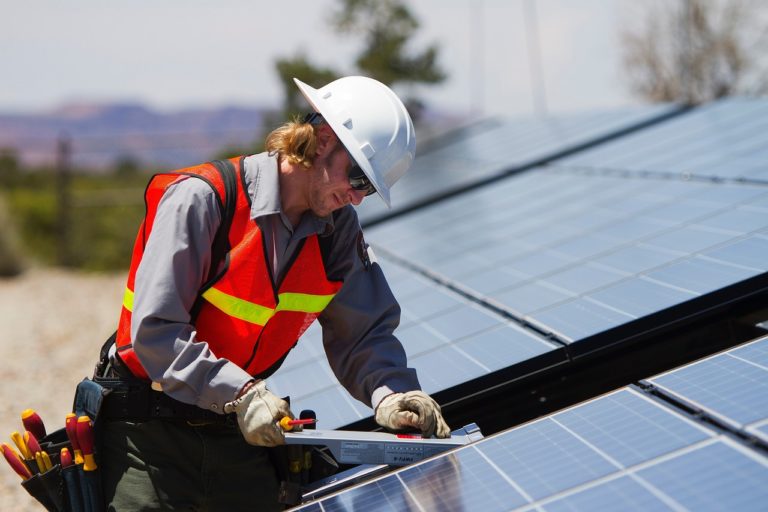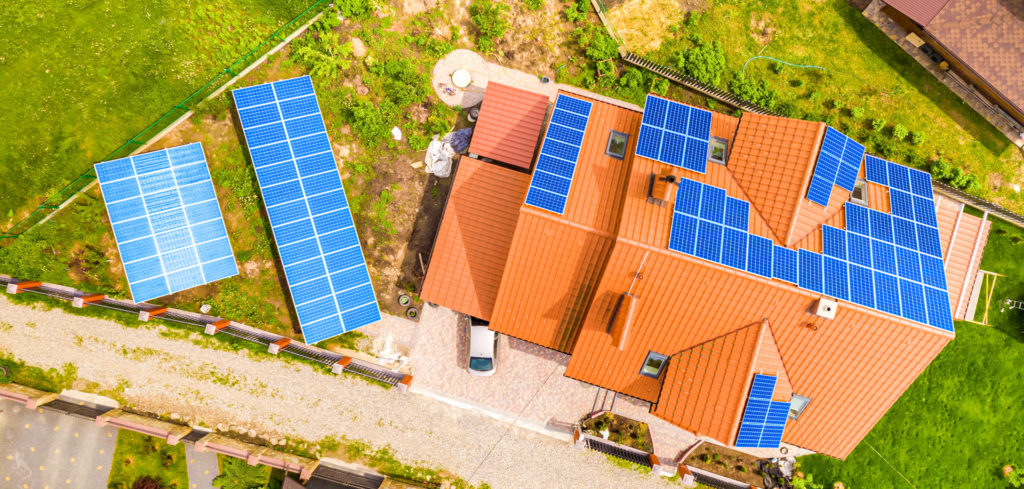Solar power is an increasingly popular form of energy in the United States, but Arizona has been slower to adopt it than other states. This article explores why solar power has not become as widely used in this southwestern state as elsewhere. The factors at play include economic considerations and cultural norms. Additionally, while certain measures have been put into place to promote its use, they may not be sufficient to spur widespread adoption of solar energy in the region. By examining each of these issues individually and looking for solutions that can help increase solar’s prominence, a better understanding can be gained about how best to encourage wider acceptance of alternative forms of energy in Arizona.
Overview Of Solar Energy
Solar energy is a form of renewable energy that harnesses the power of sunlight to generate electricity. It has been widely used in many parts of the world as an alternative to traditional sources of energy such as coal and natural gas. Solar panels, which are made up of photovoltaic cells, convert solar radiation into electrical current. This electricity can then be used for various applications including residential or commercial buildings, or for grid-tied systems that feed excess energy back into the public utility company’s electric grid.
Despite its potential benefits, solar energy is still less popular than other forms of energy production in some areas, such as Arizona. There are several factors that contribute to this lack of popularity including cost considerations, environmental regulations, and local policies.
Renewable Energy Incentives In Arizona
Arizona is one of the sunniest states in the nation, yet its use of renewable energy sources such as solar power remains relatively low. This could be attributed to a lack of incentives for households and businesses to install solar panels or other green technologies. While there are some state-level programs that incentivize renewable energy usage, many Arizona residents remain unaware of their availability.
The most significant incentive program currently operating in Arizona is called Renewable Energy Standard (RES). This program requires electric utilities companies to obtain 15% of their electricity from renewable sources by 2025. Additionally, it sets specific targets for each utility company based on their size and type. By encouraging production of clean energy at an institutional level, RES has helped grow the industry significantly since its establishment in 2006.
Impact Of Climate And Geography
Arizona is an arid state with intense sunshine, a fact that one could assume would lead to the popularity of solar power. However, this is not necessarily the case. The climate and geography of Arizona do play a role in its lack of popularity when it comes to solar energy usage.
The desert climate of Arizona consists of extremely hot summers, making air conditioning use high during these months. Air conditioning use accounts for more than half of residential electricity usage in Arizona. This means that even if homes were equipped with solar panels, they would still have very high electric bills due to the need for cooling in summer months. Furthermore, thunderstorms are common during monsoon season which can interfere with energy production from rooftop photovoltaic systems. Additionally, there are locations within Arizona where sunlight may be reduced due to mountains or other geographical features such as buildings blocking direct rays from reaching them. All these factors reduce the amount of reliable energy produced by solar installations which limits their appeal in comparison to traditional sources of energy such as natural gas or coal plants.
Cost Comparison With Other Power Sources
Solar power is abundant in Arizona, yet it remains less popular than other forms of energy. This could be due to the cost associated with solar electricity, as compared to traditional sources such as natural gas and coal. To understand why solar may not be a viable option for many Arizonans, one must compare the costs of installation and maintenance along with long-term savings from using renewable energy.
The initial installation cost of solar panels can be expensive when factoring in additional expenses like batteries, wiring, inverters and labor. These extra charges can add up quickly and make purchasing a system out of reach for some homeowners or business owners. Additionally, customers who live outside city limits may have to pay more for permits or inspections that are required by their local government before installing a photovoltaic system on their property. Further complicating matters is the possibility that an area may not receive enough sunlight throughout the year to generate sufficient electricity from solar solutions.
On the flip side, once installed, photovoltaics require low levels of maintenance over time which makes them cheaper than fossil fuels in the long run. Solar systems produce clean energy without hazardous emissions and they do not deplete resources like oil reserves or coal mines either. The average life expectancy of a photovoltaic system is 25 years so any investment made now would provide reliable returns until then. Furthermore, subsidies offered by state governments help reduce upfront expenses while tax credits further offset total costs incurred over time – making renewable energy even more attractive to those looking for eco-friendly options at reasonable prices.
Local Regulations And Laws
In Arizona, the government has implemented several regulations and laws that have hindered the development of solar energy as a viable source of power. The state’s Renewable Energy Standard (RES) requires utilities to generate 15% of their electricity from renewable sources by 2025. However, this standard does not include large-scale solar projects, making it difficult for developers to access funding or incentives for such endeavors. Additionally, there are significant restrictions on net metering in Arizona, which makes it challenging for homeowners to install solar systems and get reimbursed for any excess energy they produce. Furthermore, many utility companies in the state oppose net metering because they could lose out on profits if more people switch to solar energy. These factors make it harder for individuals and businesses alike to invest in solar technology due to financial risks associated with local regulations and laws.
The current regulatory environment has also hampered innovation in the residential and commercial sectors when it comes to solar energy adoption. Utilities are often reluctant to work with consumers who want to purchase rooftop panels; thus, preventing them from accessing potential savings through reduced electric bills over time. Moreover, most municipalities do not offer incentives or tax breaks related to installing photovoltaic systems; hindering prospective customers’ ability to take advantage of these opportunities even further. As a result, fewer people have invested in solar technology despite its long term benefits both economically and environmentally.
Societal Perception And Awareness
Societal perception and awareness of solar power in Arizona is a major factor contributing to its lesser popularity. Solar energy has traditionally been seen as expensive even though the cost of installation decreased significantly over the years. Additionally, there exists an attitude where people are reluctant to purchase technology that they don’t fully understand or are unfamiliar with. Low-income households also lack access to capital for financing large scale investments such as solar panels due to which they opt out from using renewable sources of energy.
Furthermore, many individuals remain uninformed about governmental subsidies available on solar panel installations and/or fail to accurately calculate their long term savings associated with them. Consequently, it becomes difficult for these households to make informed decisions regarding up front investments required for switching over to renewable energy sources like solar energy due to inadequate information and financial constraints.
Future Prospects For Solar Energy In Arizona
Despite its current lack of popularity, solar energy may become increasingly viable in Arizona in the future. In addition to the state’s abundance of sunlight, several economic factors could make it more attractive for residents and businesses alike. With incentives like net metering laws that allow consumers to sell excess energy back to utilities, as well as tax credits and property tax exemptions, solar power becomes a more attractive option. Furthermore, technological advances have made photovoltaics much cheaper than before, making them even more accessible.
These efforts are further bolstered by organizations such as Solar United Neighbors (SUN), which works with local communities across the country to increase access to renewable energy sources. SUN has established multiple successful community-based solar programs in Arizona; these initiatives provide education about available resources and help connect residents who want to go solar with vetted installers. As awareness increases regarding the benefits of renewable energy sources, especially given concerns over climate change and environmental sustainability, there is potential for significant growth in solar power use within Arizona in the coming years.



